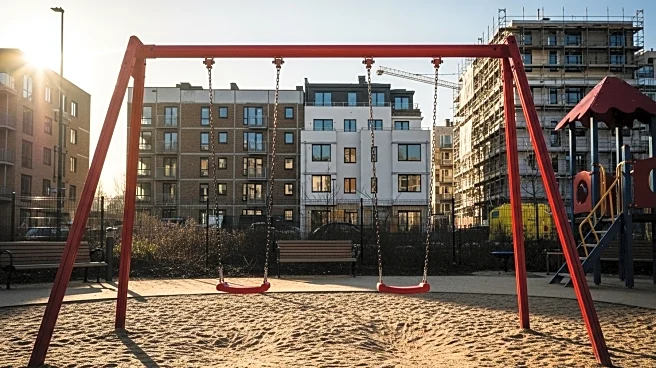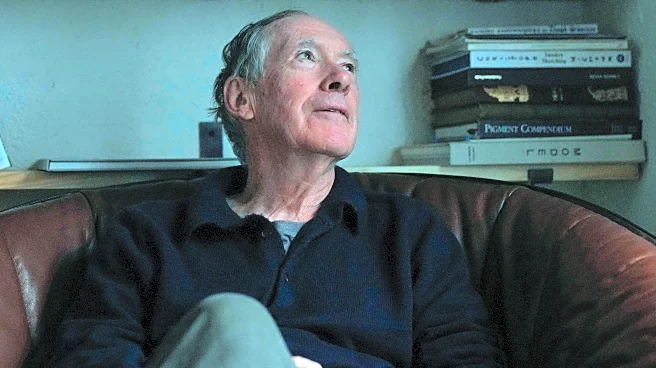What's Happening?
Olney Theatre Center has premiered 'Red Pitch,' a play originally from London's West End, which explores themes of gentrification, dreams, and friendships through the lens of soccer. The play, written by Tyrell Williams, follows three Black English teens navigating their ambitions and anxieties. The production features actors Ty'Ree Hope Davis, Angelo Harrington II, and Terrence Griffin, who deliver convincing sports sequences and portray the camaraderie among the characters. The play is set in a South London neighborhood facing redevelopment, with the characters confronting changes in their community and personal aspirations.
Why It's Important?
'Red Pitch' offers a poignant reflection on the impact of gentrification and the challenges faced by communities undergoing transformation. The play's focus on soccer as a metaphor for life and friendship provides a unique perspective on how sports can influence social dynamics and personal growth. By addressing issues such as redevelopment and the loss of cultural landmarks, the play resonates with audiences experiencing similar changes in their own neighborhoods. The production's success in the U.S. highlights the universal relevance of its themes and the power of theater to provoke thought and dialogue.
What's Next?
The play's U.S. premiere may lead to increased interest in productions that tackle social issues like gentrification and community change. It could inspire other theaters to explore similar themes, fostering discussions about the cultural and economic impacts of urban redevelopment. The success of 'Red Pitch' may also encourage playwrights and directors to create works that reflect diverse experiences and perspectives, contributing to a broader understanding of societal challenges.
Beyond the Headlines
Beyond its immediate narrative, 'Red Pitch' raises questions about the long-term effects of gentrification on community identity and cohesion. The play's exploration of friendship and ambition amidst change offers insights into the resilience and adaptability of individuals facing societal shifts. It also highlights the role of arts and culture in preserving community heritage and fostering connections among residents.












